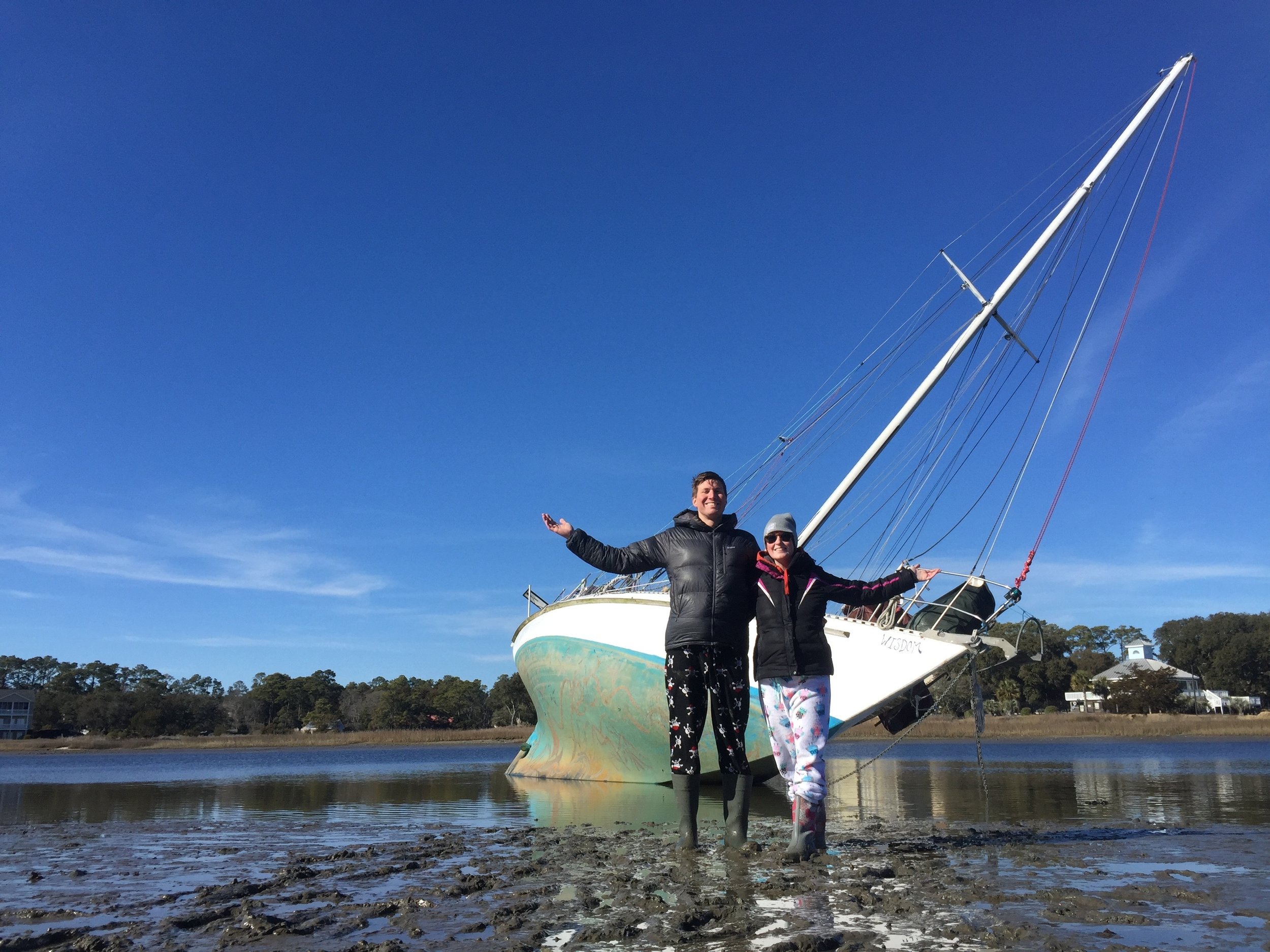When cruising, you need to pay special attention to your waterline to make sure that you are not overloaded as this will have negative effects on your sailing performance.
Not only is the weight of the cargo you are carrying important, it is also important to consider what kind of water you will be sailing in, as this will affect your waterline.
Salt water is much more dense than fresh water, meaning that it can displace more mass with the same amount of water. Basically, when you cruise in salt water, your yacht will float a bit higher out of the water than if it were in fresh water.
In our current and sad state where Wisdom is so grossly overloaded, we are sitting a bit deep in the water. Before we left, we painted over the boot stripe with bottom paint, effectively raising our waterline by six inches. While the paint may make it all look normal, the hull has cut in waterlines that will not move with a bit of paint play. The cut in load water line is currently 4 inches underwater, meaning that we are 4 inches overloaded. Being how our hull is designed to take 1000 pounds per inch, this means that we are 4000 pounds overloaded with junk that we feel is important to bring with us on this voyage.
Now, since we painted over the boot stripe with bottom paint, from a distance, it merely appears as if our yacht has no boot stripe, as the bottom paint protrudes about 2 inches above the waterline, making everything look normal and fine.
That was in salt water atleast. When we entered the Waccamaw River, however, we transitioned from salt water to pure fresh water, and the effects on our waterline were dramatic. When rowing around our boat in the dinghy, I thought something was terribly wrong because the bottom paint was now a full inch under water!
That's right, the boat sunk a full 3 inches when we entered the river. At first I thought this meant that our bilge was filling with water and we were slowly sinking, but upon inspection the bilges were all dry. Then it dawned on me, we were merely floating in a less dense fluid and therefore were less buoyant. Panic postponed, we simply had to adjust our course to make sure that we don't bump into the bottom, as we are now drawing an extra 3 inches.
When we float at our designed water line (DWL) we draw 6'2". When we are cruise ready (and severely overloaded) we draw 6'6". When we then enter fresh water, we draw 6'9". This is something to keep in mind as you plan your voyage on your own yacht, your draft will change based on how you overload your vessel and what salinity you plan to cruise in.








